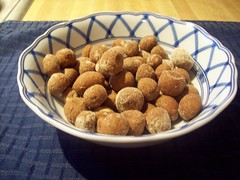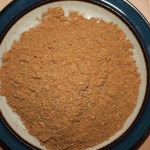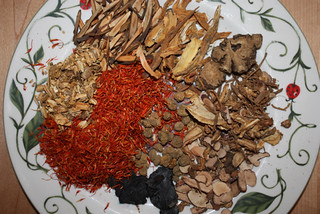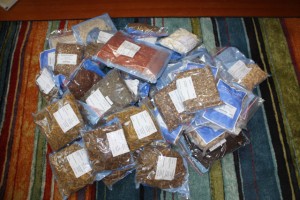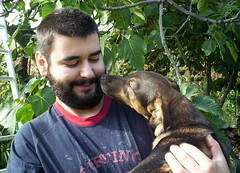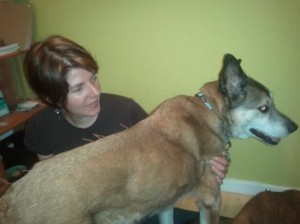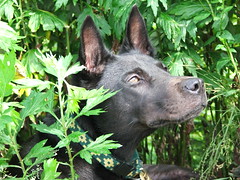 An addition to Dog’s Naturally Magazine’s Why Vets are Getting Away With Murder posted by Natural Pet Pantry.
An addition to Dog’s Naturally Magazine’s Why Vets are Getting Away With Murder posted by Natural Pet Pantry.
I remember looking up at the large brick building of Bustad hall, holding my arms closer to me as I walked up the few steps to the building, that would consume a good portion of my life for the next four years. I’d made a split second decision to change my path from medical school to vet school about two years before and here I was walking up to my first day of class. I was excited and nervous and wondered what this journey was going to be like.
Walking into the cubby room with its slight smell of cleaners and wood, I went to my little slot in the wall pulling out a stack of papers with information I would need to navigate the first week and a cute little luggage tag from one of the companies that sold cow dewormers. Hmm that was nice, they were welcoming us onboard. I had no idea.
I soon learned that is was a regular occurrence. Before our first anatomy exam colored pencils appeared in our boxes – color pencils that were exactly what we would need to make the exam easier. There were often pens, pencils, and notebooks, candy for those hard days of studying, all from drug companies. You name it, if it fit in a cubby, it would appear.
I learned that almost every day you could get free lunch, usually the yummy local Pullman pizza, if you were just willing to sit through another presentation by a drug company. And believe me I went to many of these lunches. At the time school cost about $9000-10000 a year including books. The minimum we could borrow as students was $18,500 a year, 2% of that would be taken out as fees. Most of us were living on under $8,000 a year, even in the 90s and in Pullman quite a small amount of money. Believe me every pizza lunch counted.
Our animals were a different story. Almost all of us arrived with animals. I had three cats, two guinea pigs, two rabbits and latter added my two dogs in addition to having my own human child. We all loved our animals but here we were barely having enough money to eat decently ourselves. Luckily I had spent two years volunteering at PAWS animal shelter before going to vet school and they had taught me quite a bit about nutrition. I had my cats on a food called Nature’s Recipe, which was considered one of the best foods by the natural foods people back then (it has since changed ownership and quality). Yes back in the days when I thought just dry kibble was ok for cats. I actually had to drive over to Seattle to get this food, as there was almost no choice in Pullman. The hay for the guinea pigs and rabbits was easy.
 In addition to drug companies courting us, every month Science Diet/Hill’s would come and give any vet students, who wanted food for their cats and dogs, food at an extremely reduced price. Almost all students took advantage of this. I learned a couple years later in nutrition classes that cat and dog nutrition was taught along the lines of what Hill’s prescription diet to use for what disease condition.
In addition to drug companies courting us, every month Science Diet/Hill’s would come and give any vet students, who wanted food for their cats and dogs, food at an extremely reduced price. Almost all students took advantage of this. I learned a couple years later in nutrition classes that cat and dog nutrition was taught along the lines of what Hill’s prescription diet to use for what disease condition.
I wouldn’t feed my animals Science Diet and had learned from the PAWS folks about some of the dangerous preservatives and rendering floor meat in their foods. At the time I was already interested in holistic medicine and learned that there was a small holistic medicine club at WSU. When I went into my first meeting of about five people I learned the president was stepping down and that the club would dissolve if no one took over. Not wanting that to happen, I because president of the holistic club myself. I started to think, what if we could introduce other fellow students to better quality pet foods?
I send some letters, yes before I used email, out to a few of the nature food companies that I liked asking if they would be willing to give out free or discounted food to the vet students at WSU. Precise pet food got back to me and said they would be interested and asked if I could see how many students would want that. I was excited! Not only was I going to be able to get a decent food for my own animals but the vet students around me would also have access to something besides Science Diet. As I put small notes in the student cubbies I had no idea that there was a problem with what I was doing.
The next day I was cornered by another vet student who told me, “are you crazy, do you know how much money Hill’s gives to this school?!”
That was the beginning of people stopping me in the hall to tell me I couldn’t give away free food, that I would hurt the school if I did. I soon learned that not only did Hill’s give out highly discounted food to the vet students but they also gave quite a bit of money to the vet school and here was the clincher. If any other food company gave out food not just on campus but in the city of Pullman to vet students they would not just stop giving food to students but would pull out all funding from the vet school. Wow!
I knew from the experience of others that vet school was not somewhere to go against the system if at all possible. So short story – no natural food was given out.
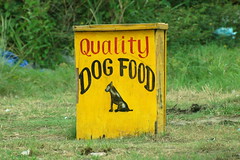 A couple years later, Iams, which was a decent food back then, found away around this rule. They rented a small storage building just past the city limits of Pullman and once a month we could drive out there and receive free food from them. They had one natural kibble without preservatives and that is what my dogs ate until I graduated.
A couple years later, Iams, which was a decent food back then, found away around this rule. They rented a small storage building just past the city limits of Pullman and once a month we could drive out there and receive free food from them. They had one natural kibble without preservatives and that is what my dogs ate until I graduated.
If you ever wonder why things are how they are, this is a large part of it. As veterinarians we are bought early in our career. We are taught that homemade and raw natural foods are wrong, we are courted by drug companies even after we graduate.
But remember that we are still free thinking individuals. Much can change. One of the largest cat only clinics in my area is now selling raw food. All our local neurologists are trained in acupuncture. Vets are now using Milk Thistle and SamE to treat liver damage. There are more and more vets that are following the minimal vaccine protocol. We are smart folks and our profession can change. As our clients before more and more interested in good nutrition and holistic medicine themselves it will carry over to their beloved animals. It already has started. We need to listen to the people who are connected to the animals we care for. We need to listen to the animals we treat, listen to their bodies and not be afraid to embrace new ideas.
*Photograph of money and pills courtesy of TaxFix – thank you for being part of the creative commons movement!
 My perception of the world has been blown. This weekend I had the honor of being able to attend a day of lectures by Jeffrey Yuan on essential oils. And I’m pretty sure I walked away a new person. If someone could have reached into my soul and opened up the reality of the world in a room buzzing with florescent lights I would have told you that was crazy. But that was exactly what happened. It seemed that we were all touched deeply, Jeffrey had a message for all of all not just on how we practice, but on who we truly are.
My perception of the world has been blown. This weekend I had the honor of being able to attend a day of lectures by Jeffrey Yuan on essential oils. And I’m pretty sure I walked away a new person. If someone could have reached into my soul and opened up the reality of the world in a room buzzing with florescent lights I would have told you that was crazy. But that was exactly what happened. It seemed that we were all touched deeply, Jeffrey had a message for all of all not just on how we practice, but on who we truly are. Through plants we can begin this work. Pu Gong Ying or dandelion “makes our grandfather more outstanding” or brings out our ancestral qualities. Did you know that other plants grow better around dandelions because dandelion provides nutrients to the soil? Just like a kind and gentle grandfather. Roots help to strengthen us and ground us and help us see where we belong. Seeds help us start a new beginning. Flowers change the way we view life and especially high altitude flowers and plants help us endure and start a new direction. They know what it is like to live in a place of low oxygen and can help us move into a place of love when there has not been enough love in our lives. Barks, which support a tree, help us when we are rigid and diseased in our bones and our support; they help us break out of chronic disease patterns there. Our inability to let go of pain settles into our joints.
Through plants we can begin this work. Pu Gong Ying or dandelion “makes our grandfather more outstanding” or brings out our ancestral qualities. Did you know that other plants grow better around dandelions because dandelion provides nutrients to the soil? Just like a kind and gentle grandfather. Roots help to strengthen us and ground us and help us see where we belong. Seeds help us start a new beginning. Flowers change the way we view life and especially high altitude flowers and plants help us endure and start a new direction. They know what it is like to live in a place of low oxygen and can help us move into a place of love when there has not been enough love in our lives. Barks, which support a tree, help us when we are rigid and diseased in our bones and our support; they help us break out of chronic disease patterns there. Our inability to let go of pain settles into our joints. 


